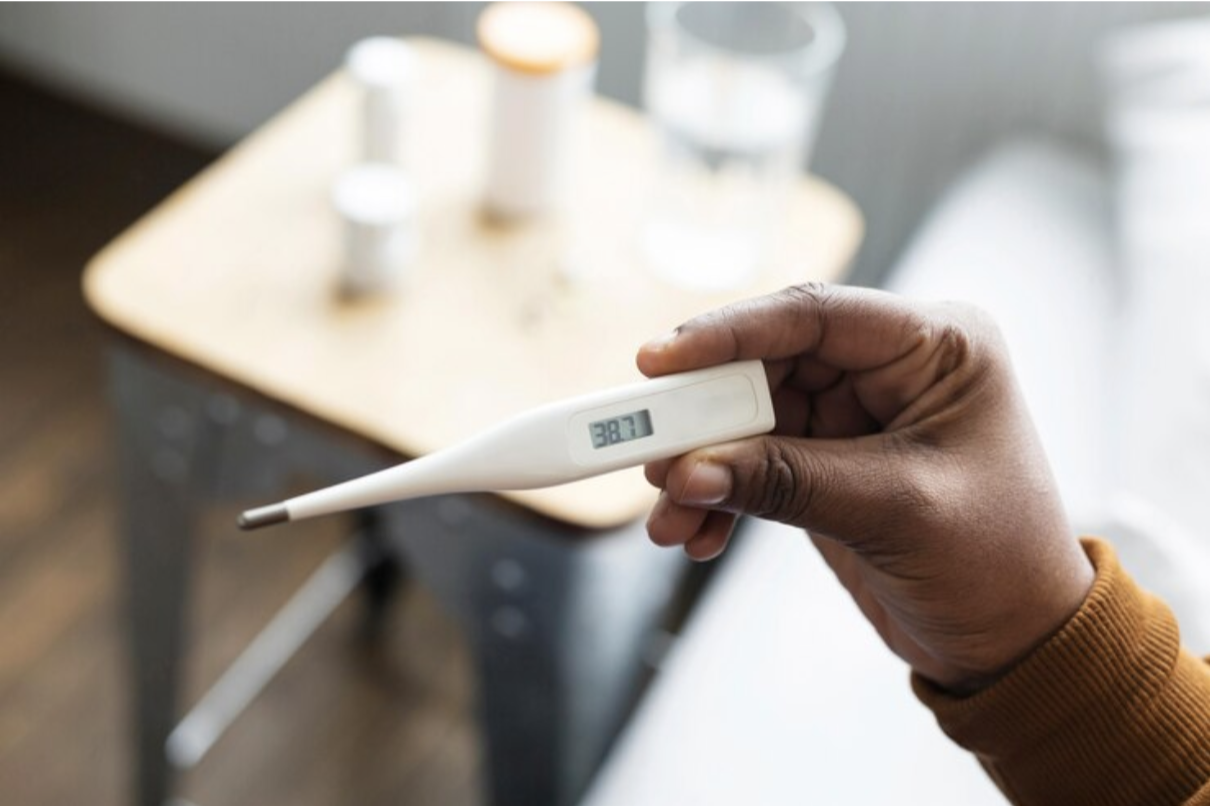Every home medicine cabinet needs a thermometer. Accurate temperature measurement
will help determine whether there is fever, which is most often caused by infection. A high
temperature indicates the body is fighting an infection or resisting another pathological
condition, such as inflammation.
Several types of thermometers can be used to measure body temperature. You should read
the instruction manual and measure according to its recommendations when using any
thermometer.
Average body temperature is about 37 degrees Celsius (° C) and can fluctuate within one °C. The average temperature is usually lower in the morning and rises during the day. It peaks closer to the evening or in the afternoon.
In adults, a temperature of 38°C or more is considered elevated. This temperature should be brought down as needed. For some people, it may be enough to increase the amount of fluids they drink or use physical cooling methods, such as rubbing or showering, while others must take an antipyretic as early as 37°C.
In children under one year of age, average body temperature may be slightly above 37.3°C.
Contact And Non-Contact Thermometers
In the realm of healthcare, choosing a reliable and efficient temperature measurer is paramount for accurate monitoring and timely interventions.The most commonly used are electronic, mercury, and infrared. There is also a Galinstan thermometer. The following will tell you more about each of them.
Mercury, electronic, and galinstan thermometers belong to the contact type of thermometers. To measure the temperature with their help, it is necessary to ensure direct contact of the device with the body: place it in the axilla, in the mouth. Rectal temperature measurement is also possible; you need to use a separate personal thermometer. Rectal temperature provides the most accurate readings for infants, especially those three months of age and younger.
Electronic Or Digital Thermometers
Electronic or digital thermometers have a display that shows the temperature value. Digital thermometers work by using heat sensors that detect body temperature.
The plus side of these thermometers is that they measure temperature quickly, usually in 1 to 3 minutes. You can buy a digital thermometer as a pacifier at baby stores and pharmacies. If your baby takes a pacifier, this may be the best way to measure their approximate body temperature. Pacifier thermometers should remain in the mouth without movement for 6 minutes. But you need to know that they give an approximate temperature value, not an exact value; if in doubt, it is better to re-measure with another thermometer.
A Mercury Thermometer
Inside a mercury thermometer is mercury, a liquid metal, placed in a glass tube. When heated, the mercury expands and moves inside the column, reaching the mark corresponding to the temperature reading. Such thermometers are not recommended for purchase because the mercury easily spreads if the glass case is damaged. This metal is toxic and evaporates quickly.
If a mercury thermometer is broken, do not throw it in the trash; collect and dispose of it properly.
The galinstan thermometer is similar to a mercury thermometer, except that it contains a liquid metal called gallstone, an alloy of gallium, indium, and tin instead of mercury. To measure the temperature with this thermometer, you must wait about 10 minutes.
Conclusion
Measuring temperature accurately is a fundamental aspect of monitoring health, and having the suitable thermometer is essential for accurate readings. Each type serves a specific purpose, from traditional mercury thermometers to modern electronic and infrared options.
Understanding normal body temperature variations, especially the fluctuations throughout the day, is vital for interpreting temperature readings correctly. Elevated temperatures, particularly in adults reaching 38°C or higher, often indicate an underlying health concern and may require appropriate interventions.
The introduction of digital thermometers brings convenience with quick and efficient temperature measurements. However, it’s essential to recognize the limitations of certain types, such as pacifier thermometers, which provide approximate values rather than exact readings.
